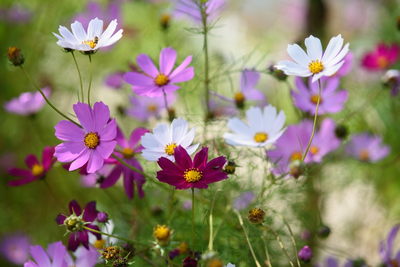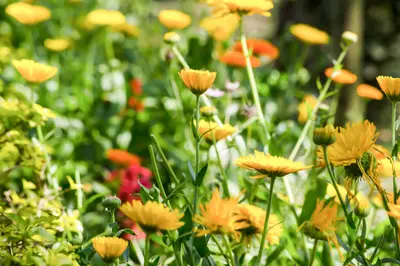Attracting Hummingbirds
By Myrna Pearman, Mother Nature’s Naturalist and Backyard Birding Expert
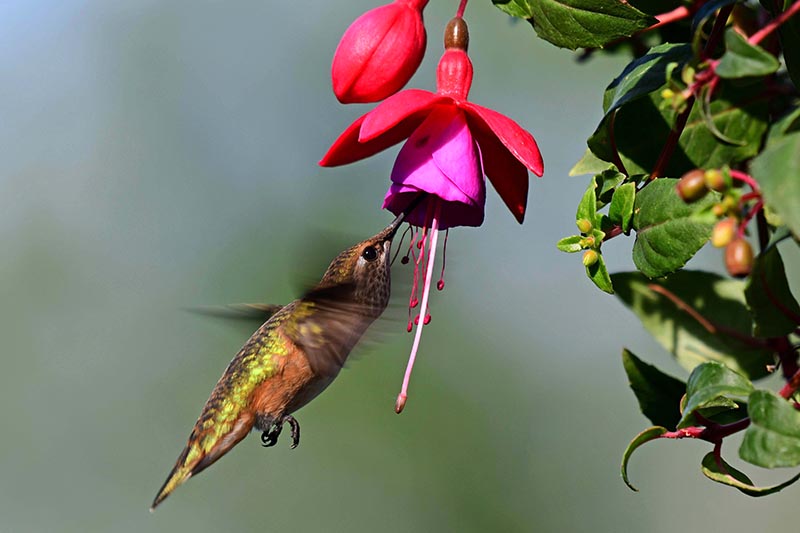
In areas where they overwinter, hummingbirds provide year-round delight and entertainment. In areas where they visit only during the summer to breed, their presence during the nesting season adds interest and vibrancy to any backyard.
While many gardeners and bird enthusiasts set out sugar water feeders to attract hummingbirds, I recommend offering these remarkable little birds a more rounded diet by planting hummingbird-attracting shrubs, perennials, annuals and vines. Plants not only offer nectar but—most importantly—attract myriads of tiny insects upon which the hummers depend for a healthy diet.
While success at growing hummingbird shrubs depends on factors such as eco-region, sun/shade mix, rainfall and even micro-climate, most hummingbird-friendly perennials, annuals and vines are readily available at Buckerfield’s garden centres and will happily grow in a variety of conditions. If planting them in the ground is not an option, Buckerfield’s has a wide variety of suitable plants in containers and hanging baskets. Hummingbird plantings will not only bring hummers into feed, but they many also encourage a female to set up her territory for nesting.
The following is a basic list of hummingbird-attracting plants. Check your local Buckerfield’s for details about which are the best choice for your yard conditions.
Shrubs:
- Abelia
- Azalea
- Butterfly Bush
- Cephalanthus
- Fuchsia
- Hibiscus
- Rhododendron
Perennials:
- Bee Balm (Monarda)
- Cardinal Flower
- Columbine
- Coral Bells
- Delphinium
- Fireweed
- Four O'Clocks
- Foxglove
- Hosta
- Hummingbird Mint (Agastache)
- Lupine
- Penstemon
- Phlox
- Annuals:
- Cana Lily
- Fuchsia
- Firecracker Plant/Annual Cuphea
- Gladiolas
- Impatiens
- Jewelweed
- Petunia
- Nicotiana
- Penstemon
- Phlox
- Salvia
Vines:
- Canary Bird Vine
- Scarlet Runner Beans
- Morning Glory
- Trumpet Honeysuckle
- Trumpet Vine
- Wisteria
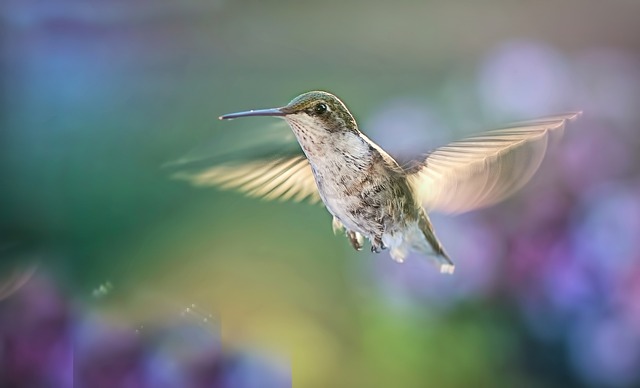
Adding Water:
Hummingbirds love to bathe, either in shallow water or in mist. They will bathe while splashing around in the shallow edges of a bird bath or by flying through clouds of mist. Commercial misters are available, although setting a garden hose wand on the “mist” setting and aiming the water into a shrub or over a flower bed/garden may bring them in for either a sitting bath (they will sit on a dead branch while fluffing the water in their feathers) or some fly-through ablutions.
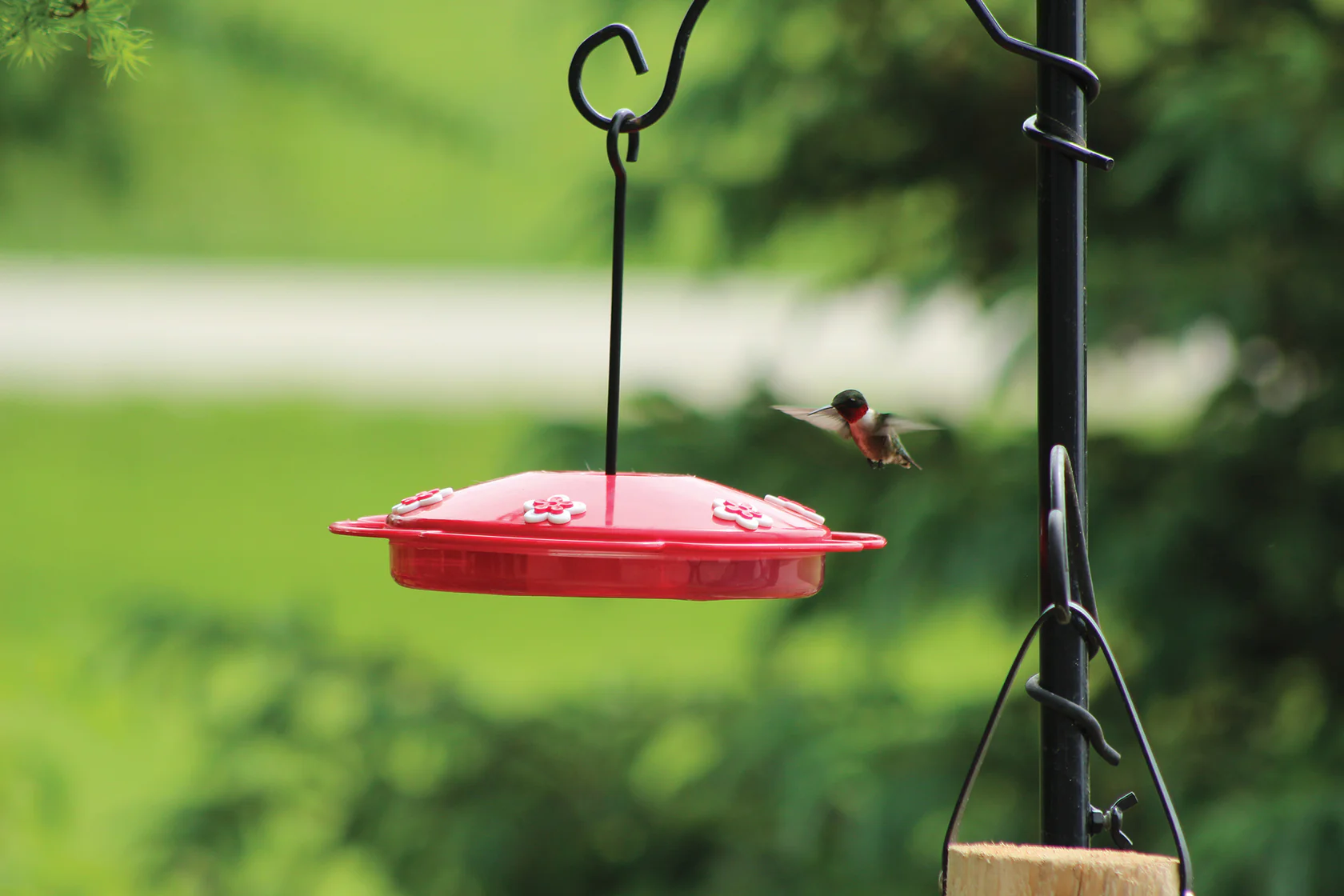
Supplement Natural Food Sources with Feeders:
There are many different styles of hummingbird feeders on the market. I recommend choosing simple glass feeders that come apart easily for cleaning. Red is the colour that attracts hummers, so avoid feeders that don’t have at least one obvious red component. Dish/saucer feeders (where the hummers have to dip their tongues down into the liquid) are better than bottle/tube feeders (where the liquid is always close to the portals) if you want to deter wasps and hornets from dining.
Offer your hummers a simple mixture of 4-parts water to 1-part white sugar. Dissolve thoroughly in hot water and dispense after it has cooled. Serve only small quantities at a time (the nectar can be refrigerated) and clean the feeders regularly, especially during hot weather, using a mild dish soap or a vinegar-water solution. Be sure to rinse thoroughly. Never use honey or brown sugar and avoid commercial mixtures that contain red dye.
Start out with one feeder and add more as more hummers start to show up. Males can be very aggressive, so be sure to place additional feeders in different locations (even on opposite sides of your house) so one male cannot keep chasing all the others away.
In addition to using dish feeders and making sure there is no spilled liquid on or below the feeder, wasp/hornet issues can be minimized by buying feeders that come with built-in nectar guards (pieces of flexible plastic that the hummer has to push open with its beak to access the liquid) or feeders that have small extension nipples on the portals. Both these modifications prevent the insects from accessing any liquid. After-market nectar guards can be purchased to retrofit existing older feeders.
Finally, if you want to support insect biodiversity in your yard but don’t want your feeders over-run by aggressive wasps and hornets, plant your garden full of bee-attracting and other pollinator plants! You might also try setting out a small dish of sugar water in a far corner of your yard, especially in the late summer when the wasps and hornets not only want to access hummer food but will also be attracted to outdoor picnics.
Ants can also be a problem at a hummer feeder. Again, make sure there is no spilled nectar on or near the feeder and hang the feeders using a length of fishing line. If ants are able to negotiate the line, add an ant moat—a small container filled with water—to prevent them from getting onto the feeder. Commercial moats can be purchased at Buckerfield’s, or you can make a DIY one by hot glueing the top of a small water bottle onto the feeder. If you are buying a new feeder, be sure to choose one that comes with an ant moat lid.
Some people believe that hummingbird feeders should be taken down in the fall to prevent the birds from “forgetting” to migrate south. But the opposite is true—hummingbird feeders (and late-blooming plants)—will provide important nutrition to late migrating birds or those that are hardy enough to over-winter.
Enjoy your hummers!
Have more questions? Visit your local Buckerfield's and we'll be happy to help!

